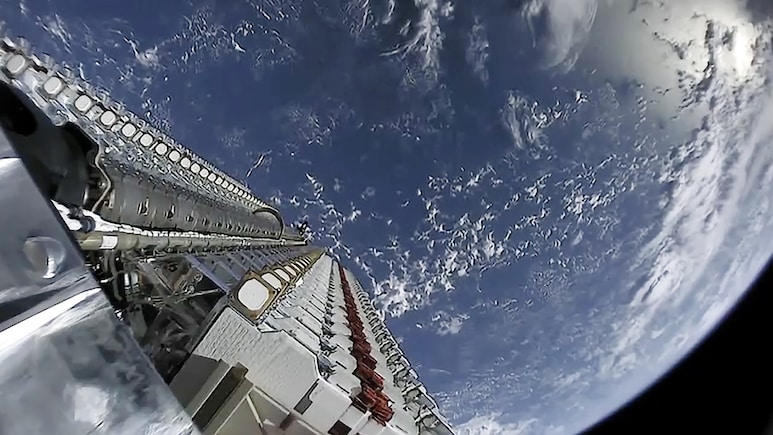
- About one to two Starlink satellites re-enter Earth's atmosphere daily currently
- The number of daily satellite re-entries could rise to five with more constellations
- There are over 8,000 Starlink satellites now, with 30,000 expected in low-Earth orbit
A growing number of Starlink satellites are falling back to Earth every day, raising concerns among scientists about a potential "chain reaction" of space debris that could threaten the safety of low-Earth orbit.
Soon, Number Of Falling Satellites Could Go Up To 5 A Day
According to data tracked by Smithsonian astrophysicist Jonathan McDowell, about one to two Starlink satellites currently re-enter Earth's atmosphere daily. That number could rise to five per day as more constellations from SpaceX, Amazon's Project Kuiper, and Chinese systems enter orbit in the coming years.
"There are already more than 8,000 Starlink satellites above us," McDowell told EarthSky. "With all constellations deployed, we expect around 30,000 in low-Earth orbit - and perhaps another 20,000 from Chinese systems. That could mean up to five re-entries a day."
Each Starlink satellite has a lifespan of roughly five to seven years, meaning older units are routinely de-orbited or fall due to system failures or solar activity.
A Risk Of Kessler Syndrome
Experts warn the growing number of defunct satellites, rocket fragments, and other debris could push Earth closer to the Kessler syndrome - a scenario in which collisions between objects generate more debris, leading to a cascading chain of impacts.
If such a situation unfolds, it could make parts of space unusable for future satellites and hinder ground-based astronomy.
Solar Activity Makes It Worse
McDowell notes that the current solar maximum - the most active period in the Sun's 11-year cycle - can accelerate satellite decay. Solar flares and coronal mass ejections heat and expand the Earth's upper atmosphere, creating drag that slows satellites and pulls them downward.
"Some satellites can be boosted back up," he said, "but others are doomed to fall."
A Crowded Orbit
While SpaceX's Starlink network has revolutionised global connectivity, its rapid expansion adds to growing congestion in orbit. With tens of thousands of satellites expected to launch in the next few years, scientists warn that managing space traffic and debris will become a defining challenge of the decade.
Track Latest News Live on NDTV.com and get news updates from India and around the world

